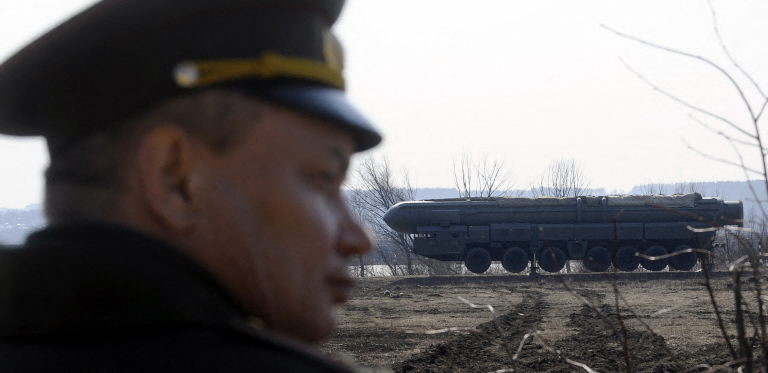Russia has trained its navy to target five sites in Turkey, along with other strategic locations across Europe and Asia, with nuclear-capable missiles in a potential conflict with NATO, according to secret documents obtained by the Financial Times.
Rusya'nın NATO ile olası bir savaşta denizaltılarından atılan nükleer silah başlıklı füzeleri için tayin ettiği hedefler. Türkiye'de görüldüğü kadarıyla 4 hedef var. 2008-2014 tarihli gizli belgelerden. @FT https://t.co/b4ptndQH6c pic.twitter.com/SyM5aMx99X
— Sinan Ulgen (@sinanulgen1) August 13, 2024
The leaked files, dating back to between 2008 and 2014, reveal detailed plans for missile strikes against NATO member states, including Turkey, in the event of a war. The documents indicate that Russian naval officers have been trained to launch conventional or tactical nuclear strikes early in a conflict, aiming to weaken the military and economic potential of their adversaries.
The maps included in the files pinpoint targets in Turkey, specifically in the Marmara, Black Sea and Central Anatolia regions. These targets include the Gölcük Naval Base and nearby refinery, the naval forces stationed in the northern regions, several air force bases critical to Turkey’s defense infrastructure and the command headquarters located in the capital of Ankara.
The documents also highlight other potential targets across Europe, such as the western coast of France and the British town of Barrow-in-Furness, where the UK’s submarine manufacturing facilities are located.
According to the report, Russian military doctrine suggests using nuclear strikes at the outset of a conflict to maximize strategic advantage. The Russian navy’s high maneuverability and capacity for sudden, preemptive strikes are emphasized in the training materials, which outline the use of both nuclear and conventional weapons to achieve Russia’s objectives.
Former NATO officials and analysts have expressed concern over the implications of these revelations. William Alberque, a former NATO arms control official, warned that Russia’s strategy appears designed to instill fear and force Western nations into submission. The use of tactical nuclear weapons, which are seen as potentially decisive in warfare, underscores the risks of escalation in any confrontation between Russia and NATO.
The documents also confirm that Russia has maintained the capability to carry tactical nuclear weapons on surface ships, despite a 1991 agreement between the United States and the Soviet Union to remove such weapons from naval vessels. This retention of nuclear capability on surface ships poses significant risks, particularly in the event of an accident or escalation during a conflict.
The Financial Times report comes amid heightened tensions between Russia and NATO, particularly in the context of Russia’s ongoing war in Ukraine. The documents provide insight into Russia’s long-standing military strategy, which has prioritized the use of nuclear weapons as a central component of its defense posture against NATO.
NATO officials have acknowledged that the alliance’s air defense capabilities may be insufficient to protect against a full-scale Russian missile attack, particularly along its eastern flank. This vulnerability raises concerns about the potential effectiveness of NATO’s deterrence and defense strategies in the face of a possible nuclear confrontation.


